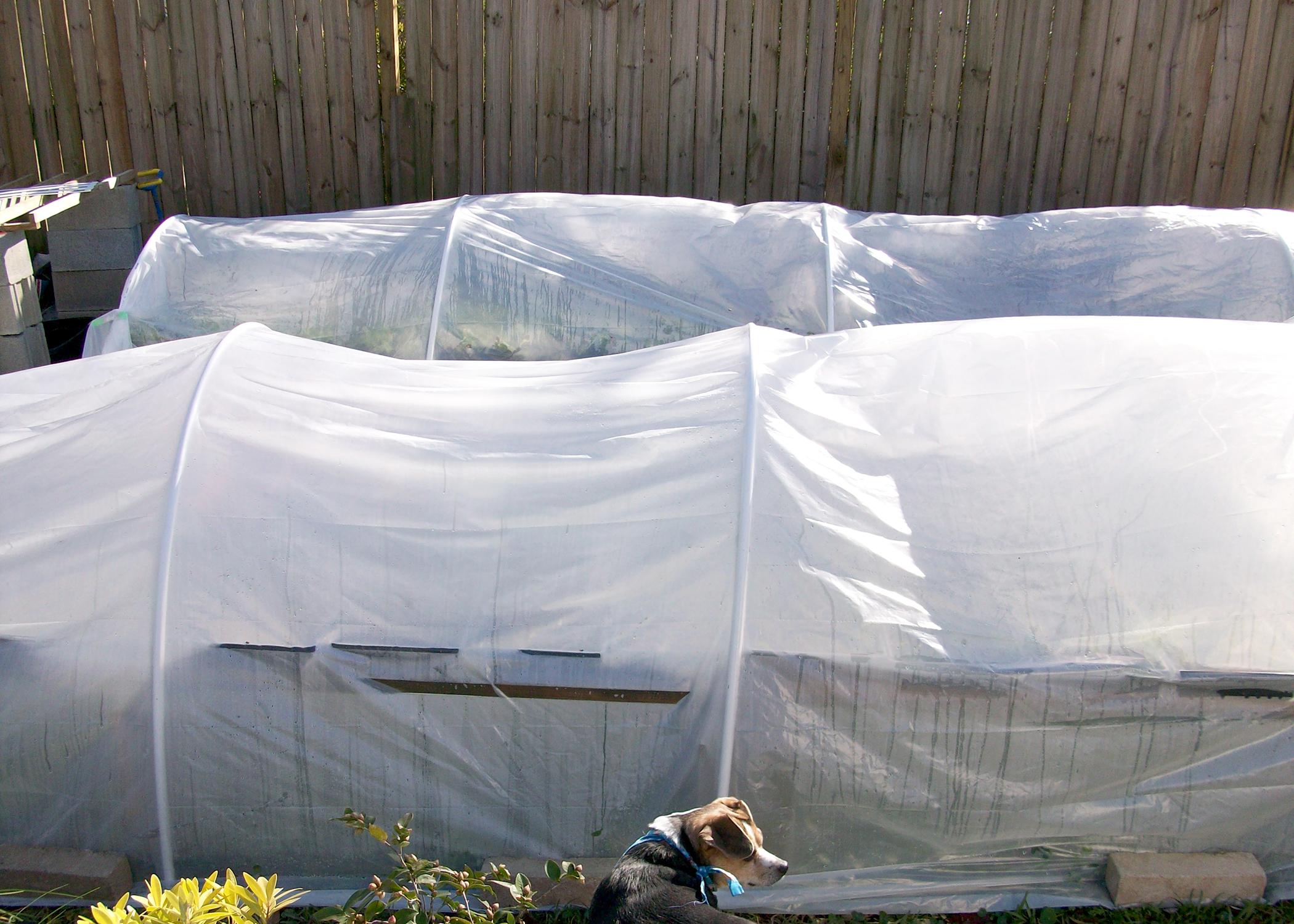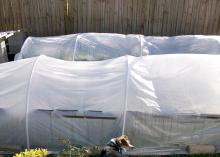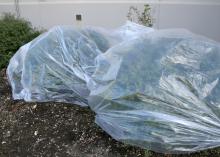Information Possibly Outdated
The information presented on this page was originally released on December 21, 2015. It may not be outdated, but please search our site for more current information. If you plan to quote or reference this information in a publication, please check with the Extension specialist or author before proceeding.
Tips help gardeners bundle up their plants
We’ve been lucky so far to enjoy a fairly mild beginning to the cool season in the landscape.
In my coastal garden, my Rio Pink dipladenia continues to brighten my garden, growing in its half-barrel container. Other absolute stellar performers are my two large firecracker plants. They have provided nonstop bumblebee action, and the plants are actually humming as I walk by.
But all this late-season landscape enjoyment is bound to end. I have a friend who is an amateur meteorologist, and he keeps reminding me that the upcoming winter, however late it arrives, is forecast to be cooler.
That means the mild temperatures we are enjoying now could be offset by much colder conditions in the coming weeks. And this means we’ll have to provide protection to some landscape plants to help them ward off Old Man Winter’s chill.
A story I like to tell about paying attention to cold weather happened a couple of years ago with a TV forecast that called for 36 degrees. I went to bed without covering my winter greens. When I woke up the next morning, it was 26 degrees outside. It’s a good thing most of our leafy green, cool-season vegetables can tolerate some fairly low temps.
So since the cold is coming, here are some tips to help you bundle up your landscape and winter vegetables.
One of the best things you can do for evergreen landscape plants is to have a good layer of mulch. The mulch acts as a blanket on top of the root system, insulating it from the cold.
Make sure your plants are well watered going into a cold weather event.
I always receive questions about the importance of watering in the winter. Maintaining adequate soil moisture is just as important in winter as it is in summer. Your hose should be the last item you put away ahead of cold weather. As water freezes, it releases heat that is transferred to plants, helping insulate the root system during cold snaps.
Maintaining good moisture is especially important for plants grown in containers. Moisture in the potting mix acts as a buffer to falling temperatures, providing insulation and releasing heat as it cools.
Plants grown in containers also have the advantage of being portable. When temperatures dip towards freezing and below, just move the plants into the garage for a couple of days. If moving them into the garage is not an option, simply place the plants up against the house to provide some protection. West- and south-facing walls are best, as they absorb and release more heat energy from the sun than do north- or east-facing walls.
Cover in-ground plants with plastic sheets, cloth, boxes, etc. Ideally, the foliage should not touch the covering. Using quick hoops is an ideal way to cover and protect vegetable crops from cold weather damage. This approach has worked very well in my garden every winter.
Even when you provide cold weather protection, plant injury can occur from freezing temperatures. Injury to herbaceous plants is immediately evident, as the plant tissue darkens and seems to melt away. But woody landscape plants are a different story.
It may be several weeks after a freeze or even into the spring and summer before cold-related damage is readily seen. So don’t be in a rush to prune these plants immediately after a freeze. Be patient and look for damage when the woody plants start growing again.









